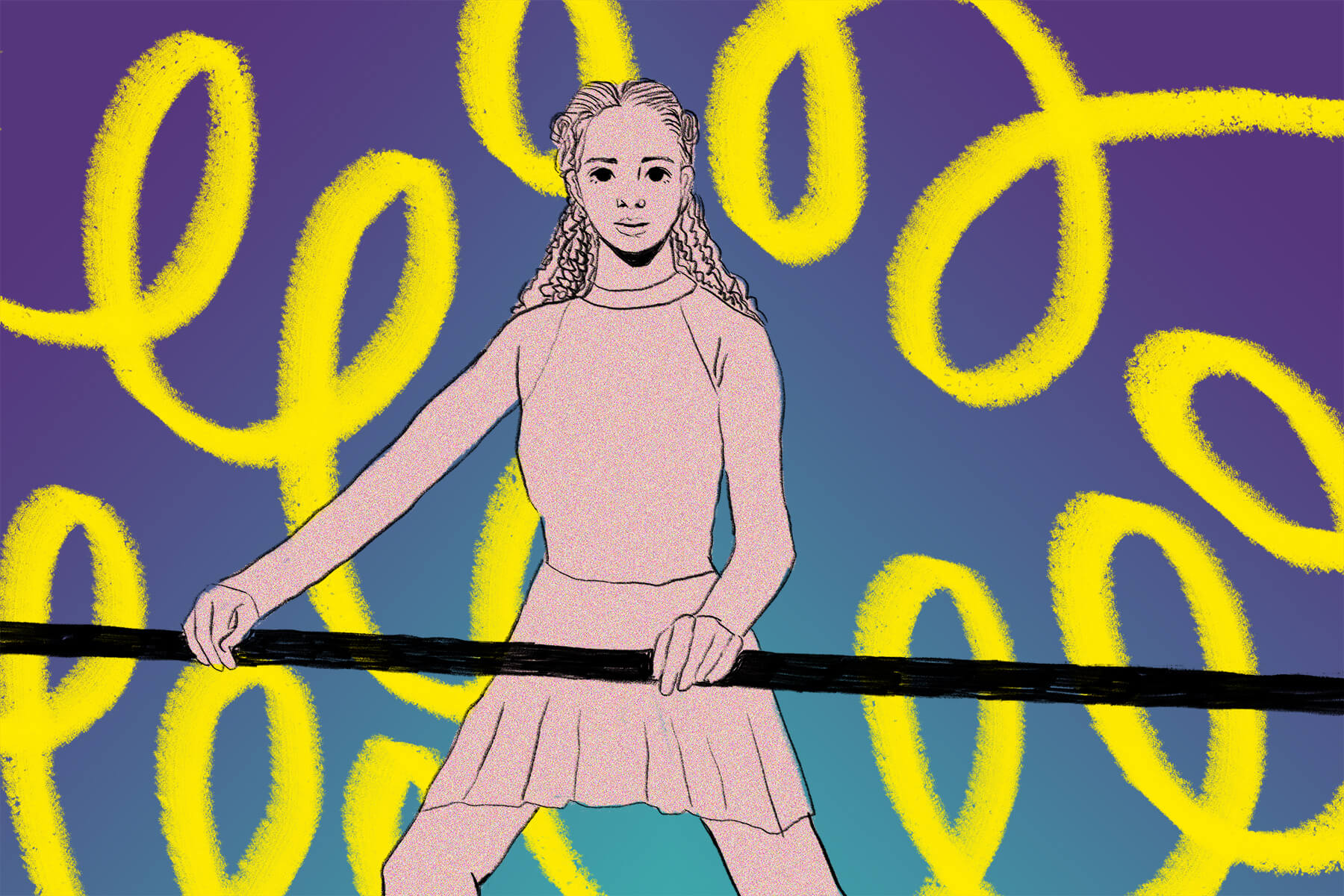Netflix’s “Tiny Pretty Things” danced onto screens late in December. Based on Sona Charaipotra and Dhonielle Clayton’s novel, it is described as “’Black Swan‘ meets ‘Pretty Little Liars.’”
The show opens with star dancer Cassie Shore pirouetting on the lip of a rooftop, the Chicago skyline illuminating the background. A mysterious hooded figure appears on screen, whispers in Cassie’s ear and pushes her off the roof. In a mystical, dance-like scene, Cassie elegantly flies down the side of the building, the narrator talking about the goal of a dancer being to defy gravity, until her body thuds on the concrete. A white rose falls next to her, which traditionally represents new beginnings or farewell to the receiver.
The rest of the show revolves around the fall of Cassie Shore, which creates ripples throughout the dance academy. In a world of fierce competition, atrocious scandals and beautiful performances, “Tiny Pretty Things” follows the students of the Archer School of Ballet as they deal with the aftermath of Cassie’s fall, while also getting ready for the new dance season with their performance of “Ripper” — based on Jack the Ripper. The show explores the thin line between beauty and pain in the world of ballet.
The viewer is thrown into the world when new girl Neveah comes to the academy to take Cassie’s place, the school’s way of bringing positive attention and steering media away from her tragedy. Neveah, glad to have the opportunity, is plunged straight into the drama. She begins as the underdog, but hardens as she faces cutthroat instructors, her mom getting out of jail and the mistreatment of the female dancers.
The background of the series recalls early teen shows such as “Degrassi” and “Dance Academy” while taking on the dark theme of today’s teen dramas, like “Riverdale.” Each of the characters carry their own darkness and all of them are morally gray. It is easy to both love and hate them.
“Tiny Pretty Things” is addictive. I finished all 10 episodes in a matter of days. Its classic whodunit storyline pulls the viewer through the episodes and its strong suspense keeps viewers on their toes. As the viewer gets to know the characters and their backgrounds, they come one step closer to figuring out who pushed Cassie.
The characters bring something exceptional to the series. There’s something alluring about the “beauty is pain” theme. In a ballet academy that produces such beautiful dancers and shows, there is a darkness and corruption that lurks beneath. The series delves into the lives of the dancers, the inner immorality they have as a result of the merciless field they’re in and the corrupt adults that lead them. June, for instance, whose controlling mother threatens to disenroll her from the academy, fights to keep dancing and even becomes emancipated. Along the way, she deals with being sexually assaulted and stands up to the cold choreographer, who constantly holds the lead role over her head and even tells her she’s not sexually experienced enough to play the part.
The biggest thing that caught me off guard was the near nakedness of the characters during sex scenes. Depictions of sex are almost expected in series aimed at teens, but it was surprising to see numerous explicit sex scenes in which most of the body is shown. Many viewers said it wasn’t necessary, and that it’s basically “soft porn.”
The series tackles many issues in its 10 episodes, such as race and identity, sexual violence and corruption. However, the plot becomes so tangled with all of the storylines it’s balancing that it sometimes fails to tie up loose ends. I often found myself wondering how the plot moved from one point to the other, confused about the quick congregation of characters or the glossing over of plot points I previously thought were important. For example, main prince-like dancer, Oren, often vomits up food and is obsessed with his weight, but his eating disorder gets lost in the plot, and it doesn’t get the attention it deserves.
The relationships between the characters are wishy-washy as they are ruthless on the dance floor and best friends outside the studio. There is sabotage, lies and competition between them, but it all goes away once they take a breath away from the world of ballet. It makes the viewer a bit confused about the state of the characters’ relationships, both friendly and romantic.
Similar to “Pretty Little Liars,” the characters get involved in problematic relationships. The choreographer, Ramon, is revealed to have had an affair with Cassie, and later in the season, picture-perfect Bette attempts to seduce Ramon in order to have a shot at the lead role in “Ripper.” Most problematic is the relationship between the director of the school and a student. The show features teenagers, and the fact that the director has a sexual relationship with an underage student is wrong on every level. On the other hand, a famous photographer refuses to be associated with the students, even his fans, out of fear of a rumor about him and the students having an inappropriate relationship.
“‘Tiny Pretty Things’ reveals over and over that abuse of power runs rampant in ballet and boarding schools in general,” wrote Kayla from Autostraddle. “But it’s difficult to reconcile the show’s commentary on the rampant problem of teachers and adults having sex and relationships with minors with its simultaneous romanticizing of such situations.”
Not only that, but the director of the academy, Madame DuBois, turns a blind eye to female students working at a place where wealthy men sexually prey on the underaged students. This aspect of the plot is explored as Neveah, Bette and June take down the man that assaulted June and call out DuBois and her unjust acts on stage.
The first season ends on a dramatic cliffhanger that puts all of the students’ careers in jeopardy. This adds to the expectation of another season, probably to be based on the second book of the series, titled “Shiny Broken Pieces.” With the mystery of Cassie’s attempted murder solved and the plot thick with sacrifice and tension, a new mystery emerges.
Lucy Mangan from The Guardian gave the series three out of five stars and wrote, “Overall, it’s fun. A comic-book story with a grim modern edge is about right for our current headspace.”
“Tiny Pretty Things,” although imperfect, is a binge-worthy, addicting show that will take viewers on a rollercoaster of emotions. It has inspired many hilarious memes from viewers, who took to Twitter to state their confusion, anger or overall thoughts around the series. With the possibility of a Season 2, which is plausible due to the success of the first season, hopefully the unexplored plot points and loose ends get tied up.

















